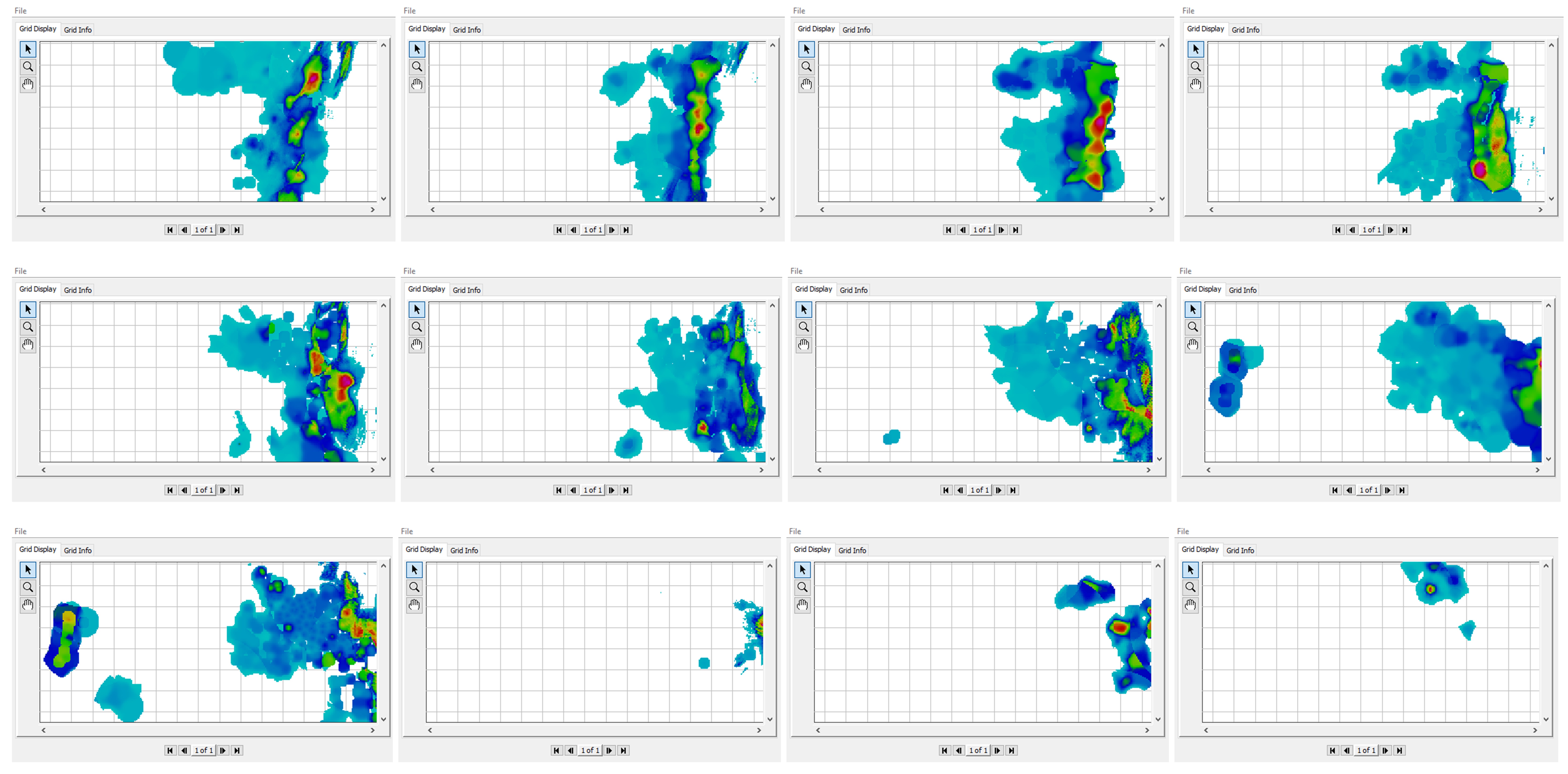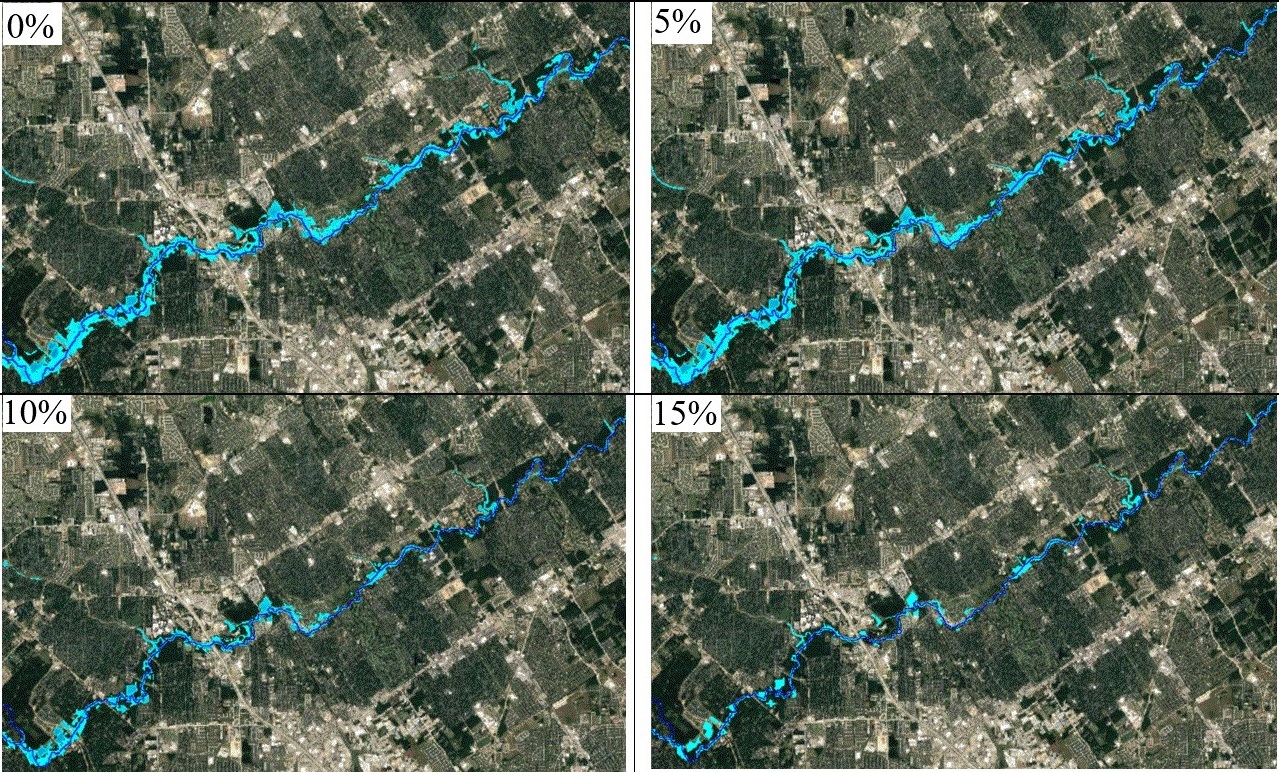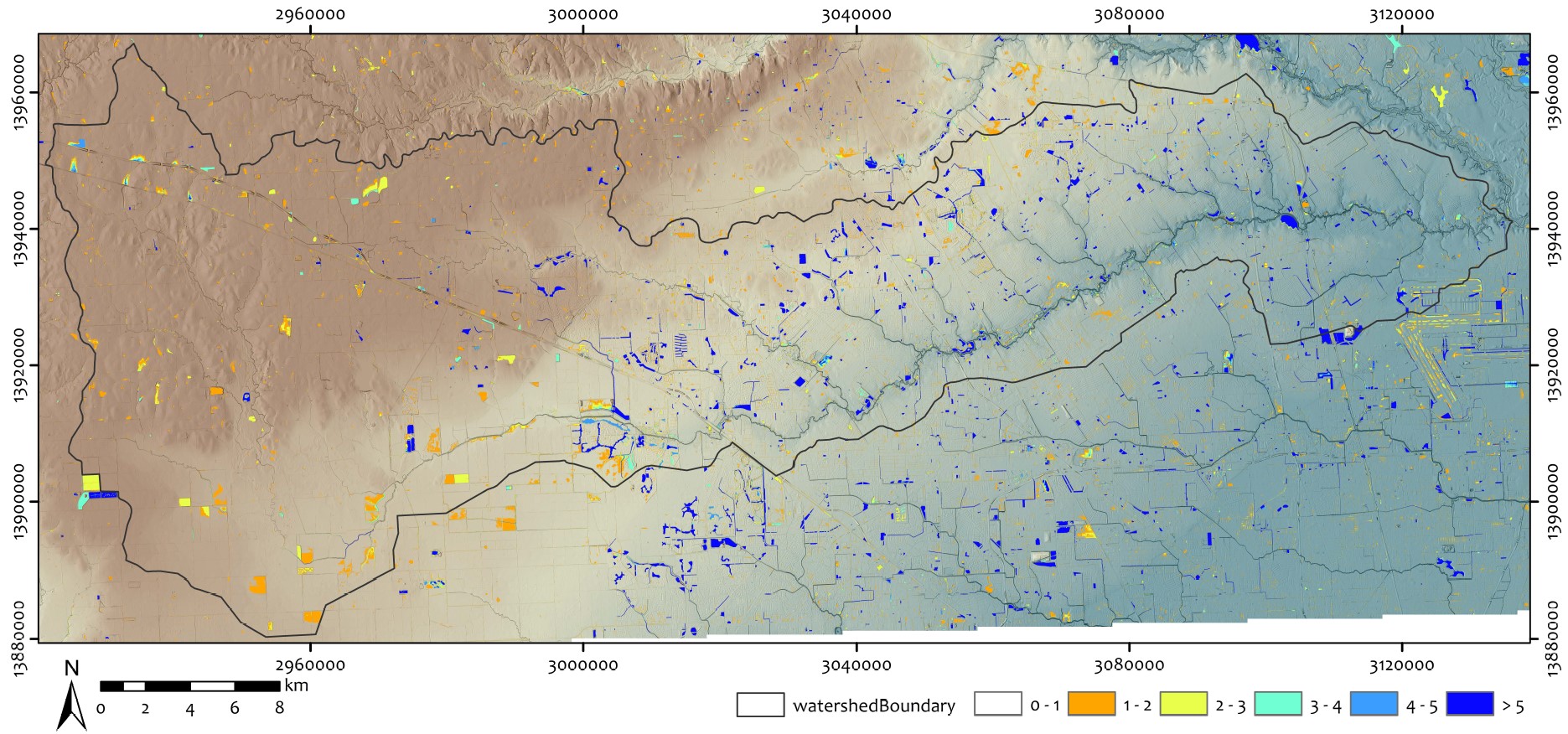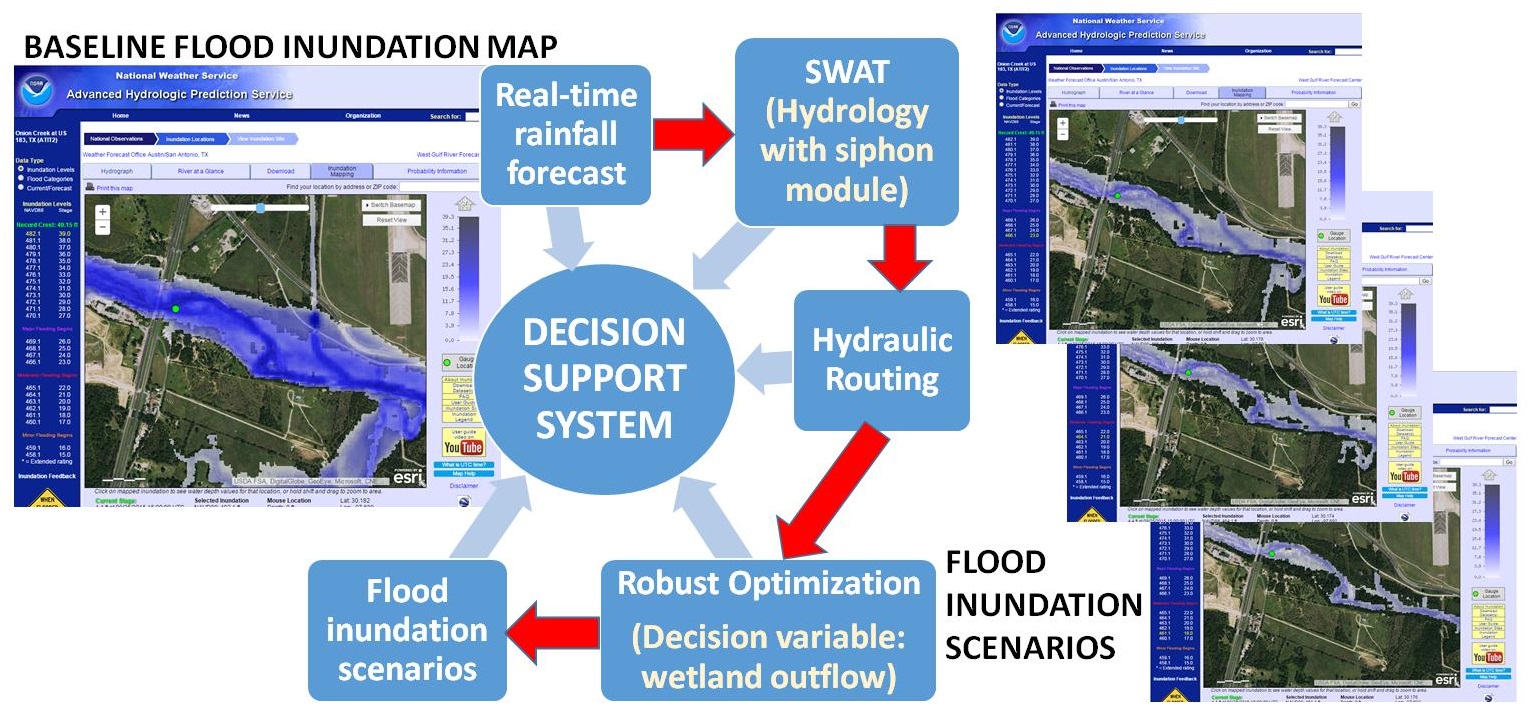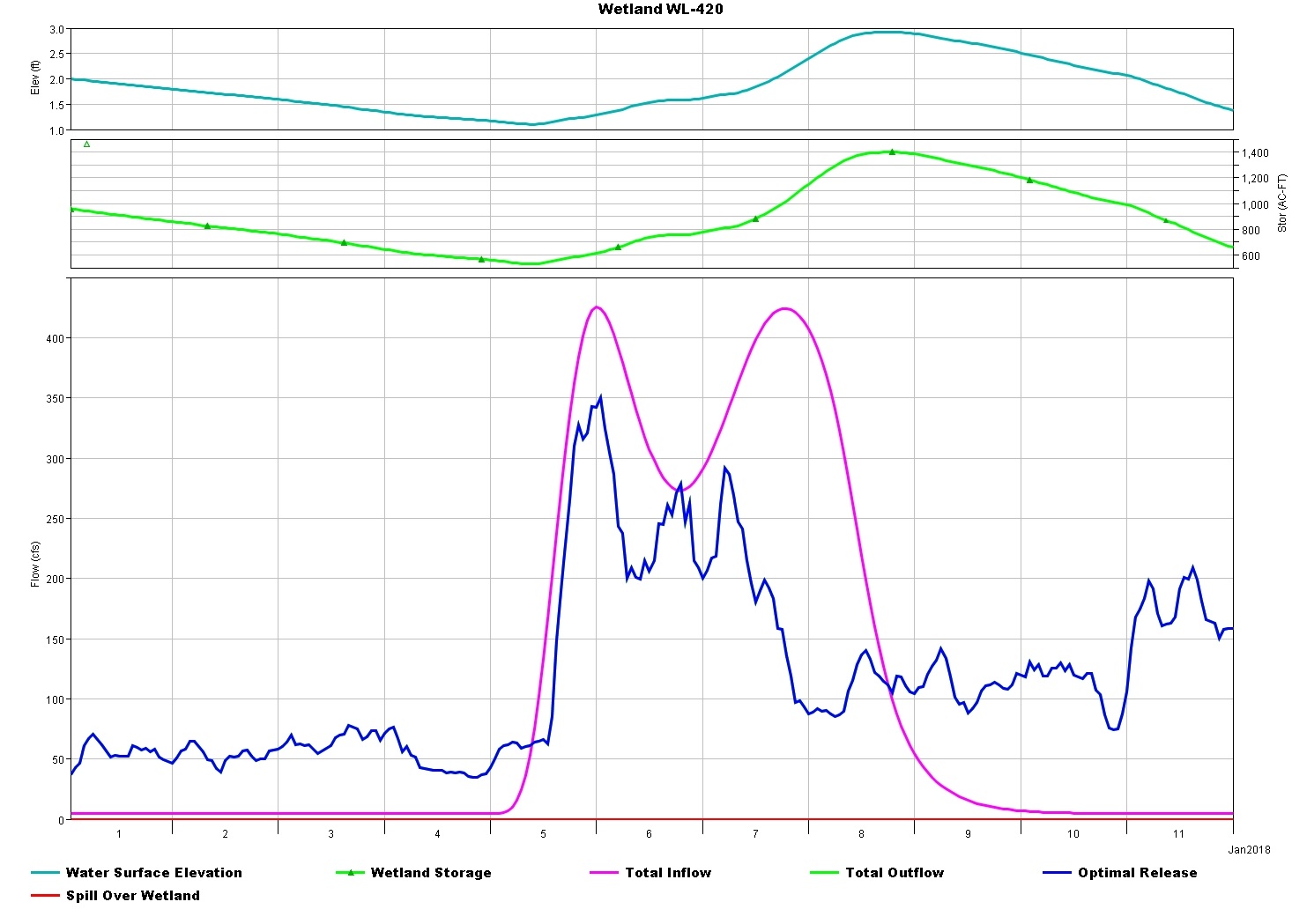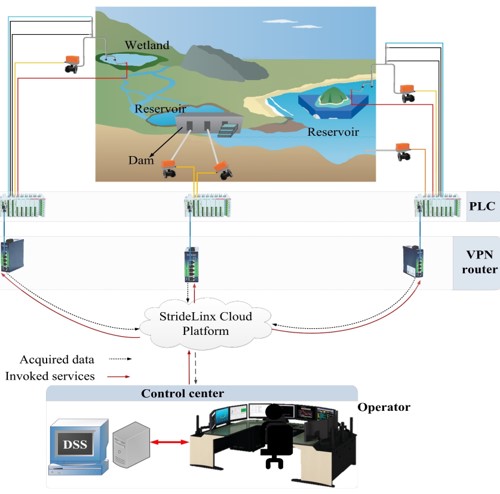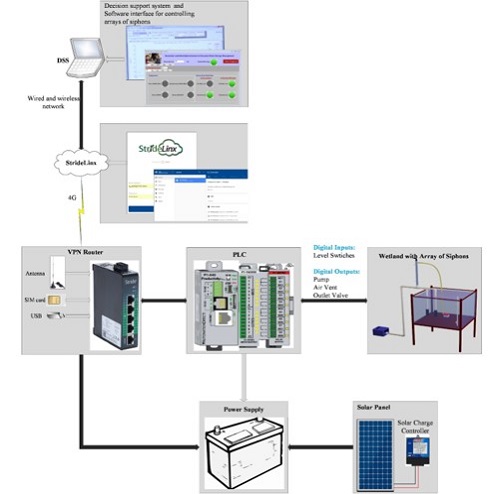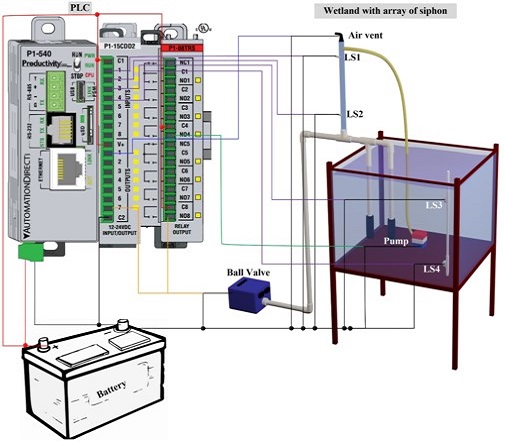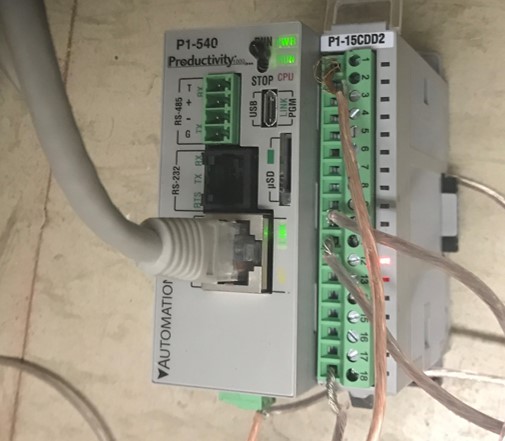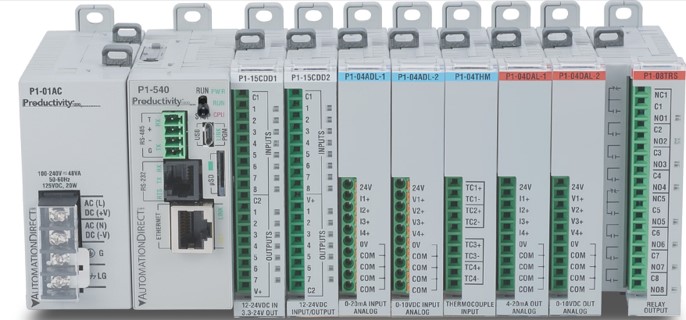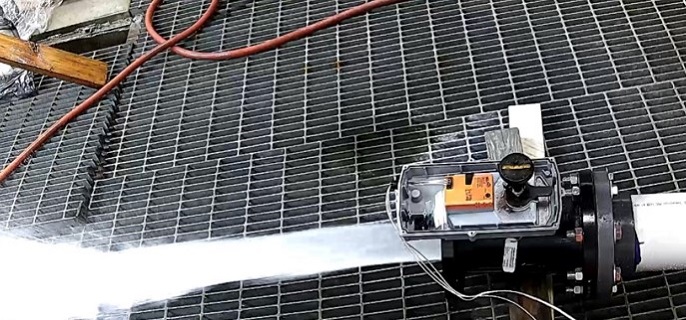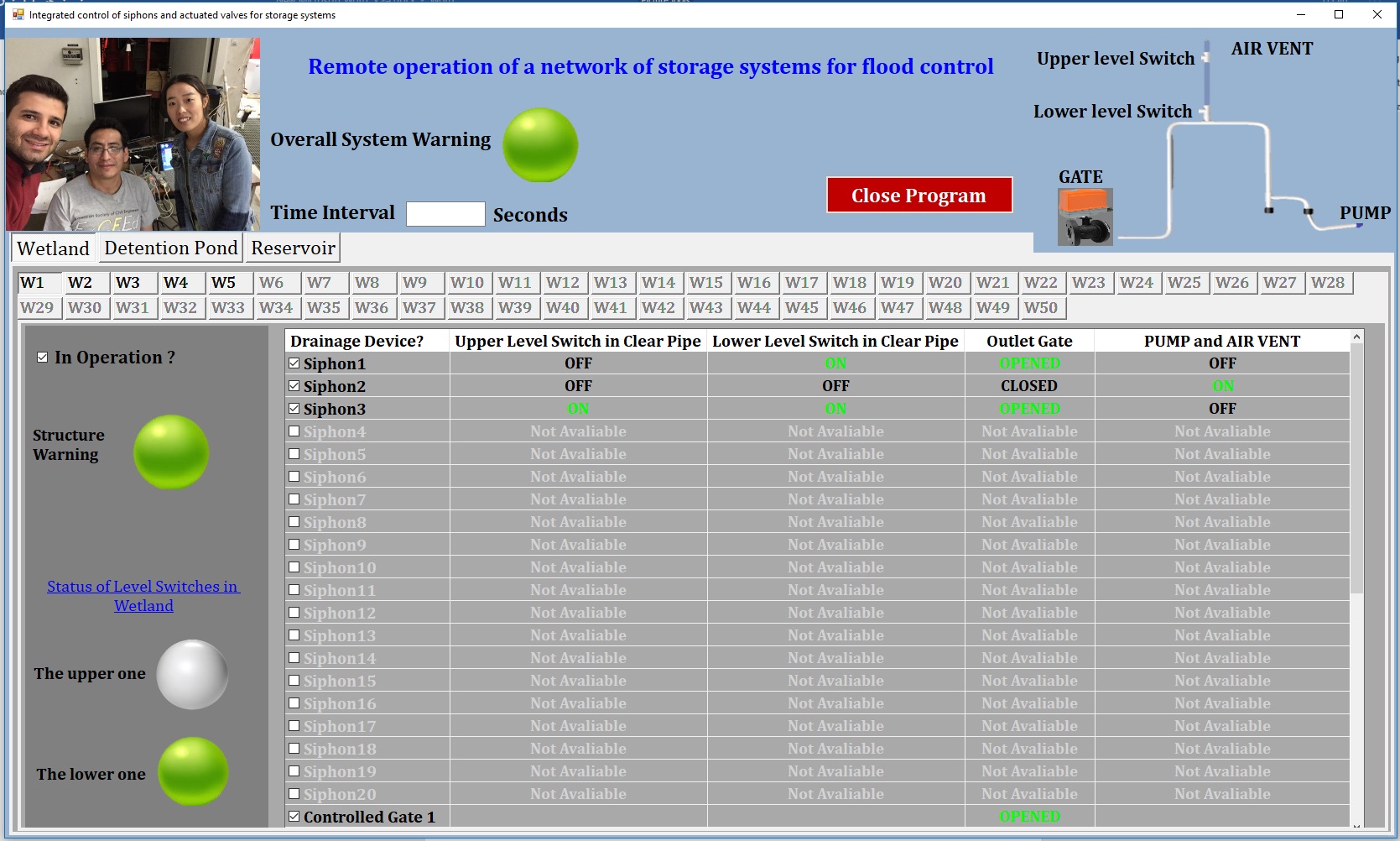Smart Flood Control
Within the area of resilient flood control, our group is developing a novel approach for flood control based on the integrated dynamic management of water storage in wetlands, detention ponds and reservoirs at the watershed scale. This approach will enable adaptive release of water from wetlands hours or days ahead of rainfall events, thereby maximizing storage capacity. For this approach to be implemented, conventional storage systems such as detention ponds would be retrofitted (e.g., adding large gates) and the gates and siphons of these systems would be remotely controlled in an integrated manner using our decision support system. Our group also developed a modular and integrated hardware/software platform for interfacing automated siphons/gates, sensors and sensor control/communication to enable remote operation of thousands of gates in wetlands, detention ponds and reservoirs. One of our laboratory tests on remote operation of siphons can be seen here. For our current projects on Resilient Approaches to Flood Control click here.
Examining the impact of wetland area, volume and its location within the watershed on reducing the magnitude of floods
We are investigating how the size of wetlands (area and usable storage in relation to the watershed area) and their location within the watershed impact the magnitude of floods at the watershed-scale. Two distinctive watersheds (The Cypress Creek Watershed and the San Jacinto Galveston Bay Watershed) within the Harris County Flood Control District (Houston), which experience recurrent flooding events, are being used as case studies. The pictures below show snapshots of some preliminary results.
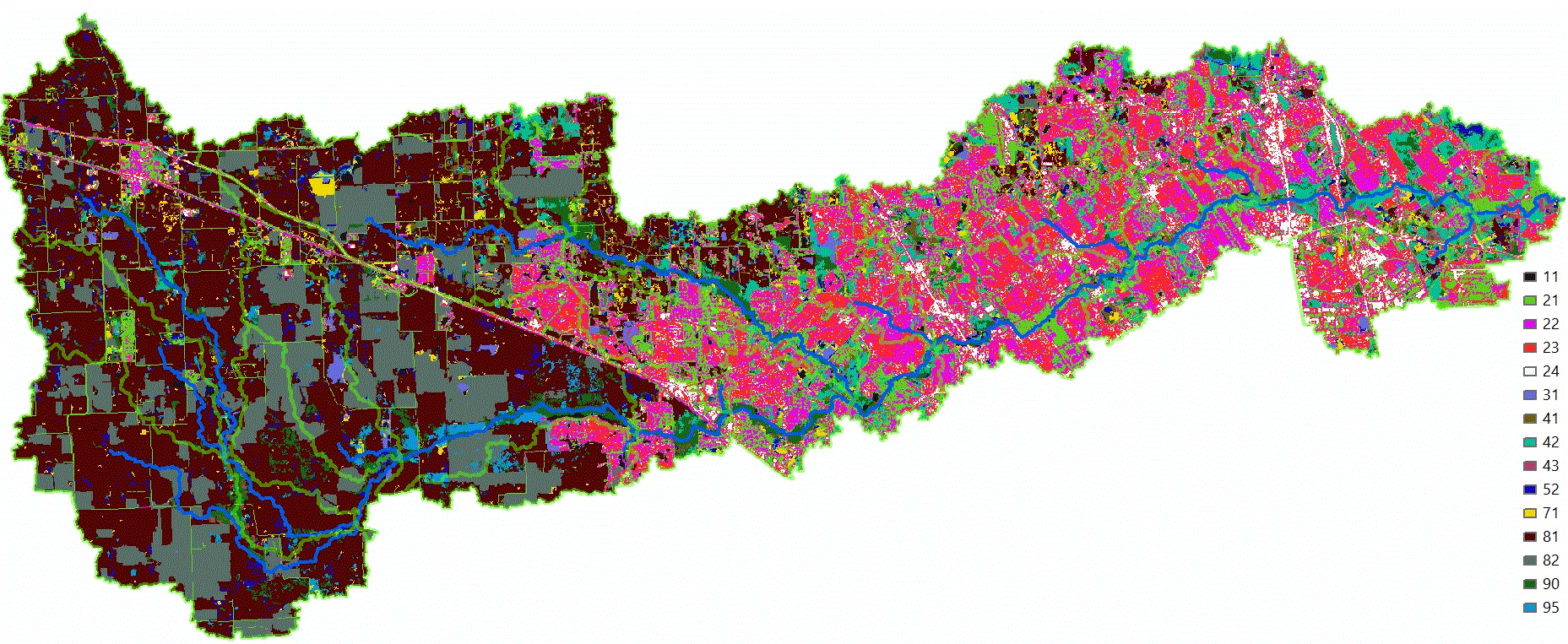
The numbers in the land cover image represent the land use class defined according to the USGS land cover institute (Case study: Cypress Creek, Texas).
Towards real-time flood control
We are developing a Decision Support System (DSS) that can be used in near-real time for guiding on the optimal water releases from a network of wetlands, detention ponds and other storage systems for mitigating floods. This approach can enable adaptive release of water from wetlands hours or days ahead of rainfall events, thereby maximizing storage capacity and minimizing flooding. For this approach to be implemented, conventional storage systems such as detention ponds would be retrofitted (e.g., adding large gates) and the gates and siphons of these systems would be remotely controlled in an integrated manner using our decision support system. This decision support system incorporates components of hydrological modeling (HEC-HMS), inundation modeling (HEC-RAS) and genetic algorithm optimization. The automated exchange of data between these models is made via HEC-DSS files. The pictures below show some snapshots of the DSS. To make possible the remote operation of water releases in wetlands and other storage systems in a relatively inexpensive way, we have developed a modular and integrated hardware/software platform for interfacing automated siphons/gates, sensors and sensor control/communication to enable remote operation of thousands of gates in wetlands, detention ponds and reservoirs. Our current integrated system uses 4G cellular network connection although we could also use direct radio, wireless and/or satellite links. One of our laboratory tests on remote operation of siphons can be seen here.
Website visitors since January 30, 2020
COPYRIGHT, ARTURO S. LEON
